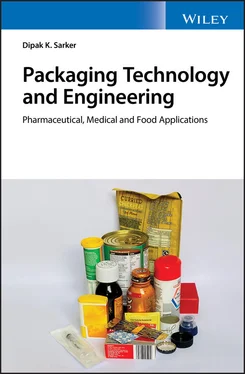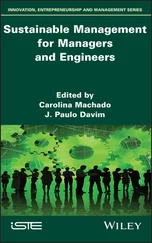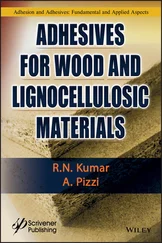1 ...7 8 9 11 12 13 ...18 Other information shown on the pack in recent times can include ‘made from recycled …’ or shows the packaging origins by bearing the caption ‘is made in part or in full from recycled material’. Where only part of the material of the product is based on recycled materials this is often indicated in a manner such as ‘label made from’ or ‘core made from’ in the case of white‐lined paperboard. Packaging manufacturers or companies that have a code number from the relevant body such as the Department for Environment, Food and Rural Affairs in the UK or the Ministry of Commerce and Industry in India may use the symbol in the way it is allocated to the product varying by the country holding the licence. Some products also bear on the pack or on the label an indication of other properties of the contents. These can include pictorial indications if the product contains flammable products such as butane, contains pressurised gas, contains toxic products (  ), or may cause infection or irritation. The product packaging also indicates if it is made from compostable materials and therefore is a recognised compostable product, such as the compressed paper egg boxes used in the UK (according to EN 13432). The complex variety of packaging materials [8] used for consumable and non‐consumable products serves a multitude of functions, but the primary importance is chemical, microbiological, and physical protection. Current awareness of packaging use, design, and resource utilisation and ultimately of sustainability [9–11] is an important issue and one that defines current, and will increasingly define future, use.
), or may cause infection or irritation. The product packaging also indicates if it is made from compostable materials and therefore is a recognised compostable product, such as the compressed paper egg boxes used in the UK (according to EN 13432). The complex variety of packaging materials [8] used for consumable and non‐consumable products serves a multitude of functions, but the primary importance is chemical, microbiological, and physical protection. Current awareness of packaging use, design, and resource utilisation and ultimately of sustainability [9–11] is an important issue and one that defines current, and will increasingly define future, use.
Washed sand is the main ingredient needed for the fabrication of most types of glass. However, glassy materials produced using only pure silica result in a glass that is too fragile for commercial handling. Consequently, soda (sodium oxide) is added to increase the durability and simultaneously decrease the melting point temperature, making the product easier to handle. Limestone minerals, such as dolomite (calcium carbonate), are incorporated into the sample to increase the chemical resistance of the glass and confer an inertness to a corrosive product. Secondary additions, such as broken pieces of preformed glass (cullet), are further added to this ‘combination’ during production; this is then heated to approximately 1500 °C and shaped into the desired glass packaging. Using broken cullet that has been through certain recycling processes provides technical, environmental, and economic advantages over virgin materials.
Glass packaging has a natural gloss and sheen and is smooth and easy to clean or rinse and dry, so it represents a convenient material for many applications. It is also aesthetically pleasing to the eye because it is optically transparent and can be fine‐tuned to possess a range of optical properties. Given the high amount of energy required for original manufacture it is convenient that glasses can be both reused and recycled. Many pharmaceutical and liquor producers prefer the material because of its inertness and non‐reactivity to chemicals but also because of its high gas and water barrier properties, combined with its ability to withstand very high pasteurisation and sterilisation temperatures. The technical properties of glass have also increased as a result of new techniques discovered for cutting, carving, moulding, and surface engraving. Using computer‐programmed cutting to form numerous designs, including same strength but lightweight versions of vessels, is now possible. Glass beer bottles account for nearly 55% of glass packaging usage followed by 18% for food, 12% for wine, alcoholic drinks, and liquor, 7% for soft drinks, and others, including pharmaceuticals, which account for only 5%. In the past stoneware, ceramic vessels, or pottery were used for pharmaceuticals, chemicals of medical use (e.g. opium elixir, Epsom salts, cold cream, quicksilver [mercury]), and foods (honey, beers, spirits, ginger beer). However, stoneware is now used as a value‐adding tool and to aid product marketing but there are no current forms of medicines making use of pottery. Part of the downfall of ceramics and their replacement with glass is a result of its lower cost in earlier times, e.g. Victorian and pre‐Victorian periods. In recent times, the return of stoneware has been used to infer a traditional basis for the manufacture of products (typically beverages and food) and thus extra value. Stoneware‐mimicking glasses have now also been made possible by frosting and compounding or pigmenting of the glass, and these have replaced nearly all food uses of ceramic containers.
Two materials, namely steel sheeting (or aluminium sheeting) and metallic ends, are used to make tinplate metal packaging. Higher grade iron, with less carbon, known as steel, forms the scaffold in the form of sheets that are electroplated with metallic tin to prevent oxidation. A further layer of organic or resinous lacquer is applied to the tin‐plated steel; therefore, any direct contact of steel with can contents (usually food) is removed. In this manner, corrosion‐resistant metal packages can be mass produced. Can bodies and ends are produced for various types of product such as high‐acid, low‐acid, and high‐sulfur‐resistant metal packaging. Other than food products, metal packaging is also used for the packaging of pigments, oils, waxes, paints, and chemical materials. The metal packaging forms a physical barrier, which is resistant to pests (insects and rodents) and also to humidity, light, and air. The thermal resistance of lacquered tin or aluminium cans favours sterilisation and is consequently used as a standard form of packaging. This is certainly the case for foods, where use is common because the can and contents can be heated and simultaneously cooled during retort sterilisation without contamination of the contents.
In the modern era, the important factors determining the preference of metal packaging are related to cost, metal abundance, environmental concerns, health concerns, and payments or levies. These have shaped modern production techniques and advances in the sophistication of manufacturing and handling machines used for various forms of container and formats of accessing the contents. As such, the development and wide‐scale use of easy‐to‐open lids, various surface designs, high structural robustness, and the tightness of seams assuring sterility are areas of considerable interest among manufacturers. Probably the most common form of making tin cans (tin‐plated steel; cans) is the drawn and redrawn process for steel or aluminium cans, with a ubiquitous example being the standard food can. The second most common form of making cans involves a DWI process for aluminium or steel cans, with a common example being the thin‐walled soft drink or beer can. Other processes include the drawn and ironed (DI) steel can; the shaped aluminium or steel can, e.g. the sardine or pilchard can; the stretch‐drawn ironed aluminium or steel can (Toyo ULtimate Can; TULC); and the welded side wall tin‐plated steel can. However, because of concerns over toxicity and lack of assurance in seam integrity, ‘soldered’ cans are rarely used in modern times. Additionally, combinations of the above forms of canning vessel may be used to create hybrid products. The frequency of use of the tin can as a routine form of preservation over the last 10–15 years for foods and beverages has seen an observable increase of roughly two times.
1.2.2.4 Paper and Cardboard Packaging
Paper at first appears to be a simple material but this is an underestimation of a complex polymeric resource that has a colourful and extensive history, with the material undergoing many processing revisions and refinements across the centuries. The first paper was constructed from woven and intertwined papyrus reeds and this even pre‐dates the well‐known originators of wood‐pulp paper in north‐eastern China. The process of making the ‘modern’ form of paper is thought to date back to the Han Dynasty (200 BCE to 200 CE). A Chinese court official, called Ts'ai Lun, in north‐eastern China fabricated fine‐grade paper sheeting by improving on an existing process dating from a century prior to his technological advancement. This paper was fabricated from fine‐fibre materials, such as mulberry, and the bark from nettles, hemp, and flax. The first recorded use of wrapping paper dates back to 100 BCE with paper made from hemp. The first paper book was dated at 256 CE and by 300 CE paper use was widespread in China and Japan. From about 750 CE paper use was seen to move from China via the ‘silk route’ to the Middle East. At approximately 900 CE paper was found ubiquitously in Egypt with an early form of paper packaging being used for wrapping spices and fruit dating back to 1035. From this point in time, paper use spread to Europe through the Spanish courts in 1085 and then on to the rest of Europe via France. By the late sixteenth century paper production in Europe was well established and there was a more formalised form of paper mill‐based production of paper in England, Denmark, the Netherlands, and Russia. In 1844 Friedrich Gottlob Keller and Charles Fenerty began undertaking experiments replacing cotton fabrics and substituting with an exclusive paper made only from wood pulp. Importantly, Henry Fourdrinier, a British engineer, and his brother, Sealy, invented and improved on a prototype of the casting Fourdrinier machine. The paper‐making machine changed the process from one of batch fabrication to one where continuous variable sized rolls of paper could be made with ease.
Читать дальше

 ), or may cause infection or irritation. The product packaging also indicates if it is made from compostable materials and therefore is a recognised compostable product, such as the compressed paper egg boxes used in the UK (according to EN 13432). The complex variety of packaging materials [8] used for consumable and non‐consumable products serves a multitude of functions, but the primary importance is chemical, microbiological, and physical protection. Current awareness of packaging use, design, and resource utilisation and ultimately of sustainability [9–11] is an important issue and one that defines current, and will increasingly define future, use.
), or may cause infection or irritation. The product packaging also indicates if it is made from compostable materials and therefore is a recognised compostable product, such as the compressed paper egg boxes used in the UK (according to EN 13432). The complex variety of packaging materials [8] used for consumable and non‐consumable products serves a multitude of functions, but the primary importance is chemical, microbiological, and physical protection. Current awareness of packaging use, design, and resource utilisation and ultimately of sustainability [9–11] is an important issue and one that defines current, and will increasingly define future, use.









